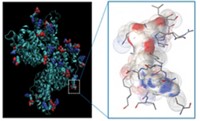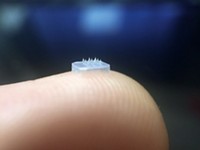Advertisement
Grab your lab coat. Let's get started
Welcome!
Welcome!
Create an account below to get 6 C&EN articles per month, receive newsletters and more - all free.
It seems this is your first time logging in online. Please enter the following information to continue.
As an ACS member you automatically get access to this site. All we need is few more details to create your reading experience.
Not you? Sign in with a different account.
Not you? Sign in with a different account.
ERROR 1
ERROR 1
ERROR 2
ERROR 2
ERROR 2
ERROR 2
ERROR 2
Password and Confirm password must match.
If you have an ACS member number, please enter it here so we can link this account to your membership. (optional)
ERROR 2
ACS values your privacy. By submitting your information, you are gaining access to C&EN and subscribing to our weekly newsletter. We use the information you provide to make your reading experience better, and we will never sell your data to third party members.
Pharmaceuticals
Shear-Activated Clot-Busting Drug
Biophysical strategy tears apart drug-carrying nanoparticle clusters to more efficiently clear blocked blood vessels
by Sarah Everts
July 9, 2012
| A version of this story appeared in
Volume 90, Issue 28
When blood clots form during atherosclerosis or a stroke, the obstruction increases the shear forces of blood in the blocked vessel. Researchers are now taking advantage of these forces to break apart nanoparticle clusters to deliver a clot-busting drug called tissue plasminogen activator (tPA) so that much less of the drug is required (Science, DOI: 10.1126/science.1217815). Because tPA causes serious side effects, such as excessive internal bleeding, the new delivery strategy has the potential to enhance drug safety, says Harvard University’s Donald E. Ingber, who led the research. Ingber’s team assembled aggregates of poly(lactic-co-glycolic acid) nanoparticles to which they attached tPA via a biotin linker. In normal blood flow, the aggregates remain intact. But near a blockage the increased shear forces break the aggregates apart, releasing the drug for efficient arrival at the clot site. Hurdles remain before the drug delivery system can enter the clinic, including ensuring nanoparticle safety and replacing biotin with a linker that doesn’t activate the human immune system.





Join the conversation
Contact the reporter
Submit a Letter to the Editor for publication
Engage with us on Twitter